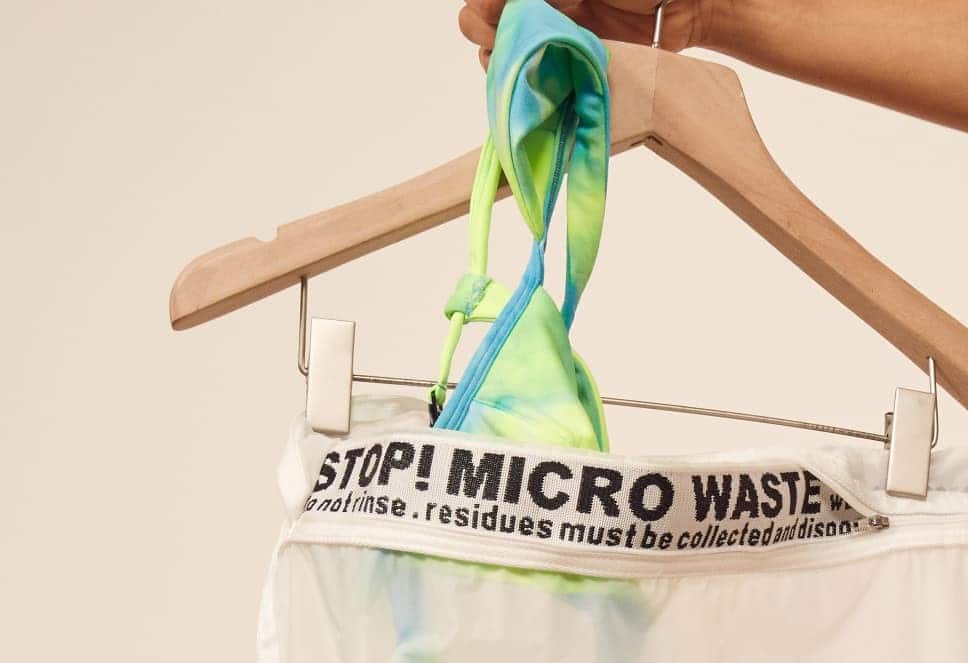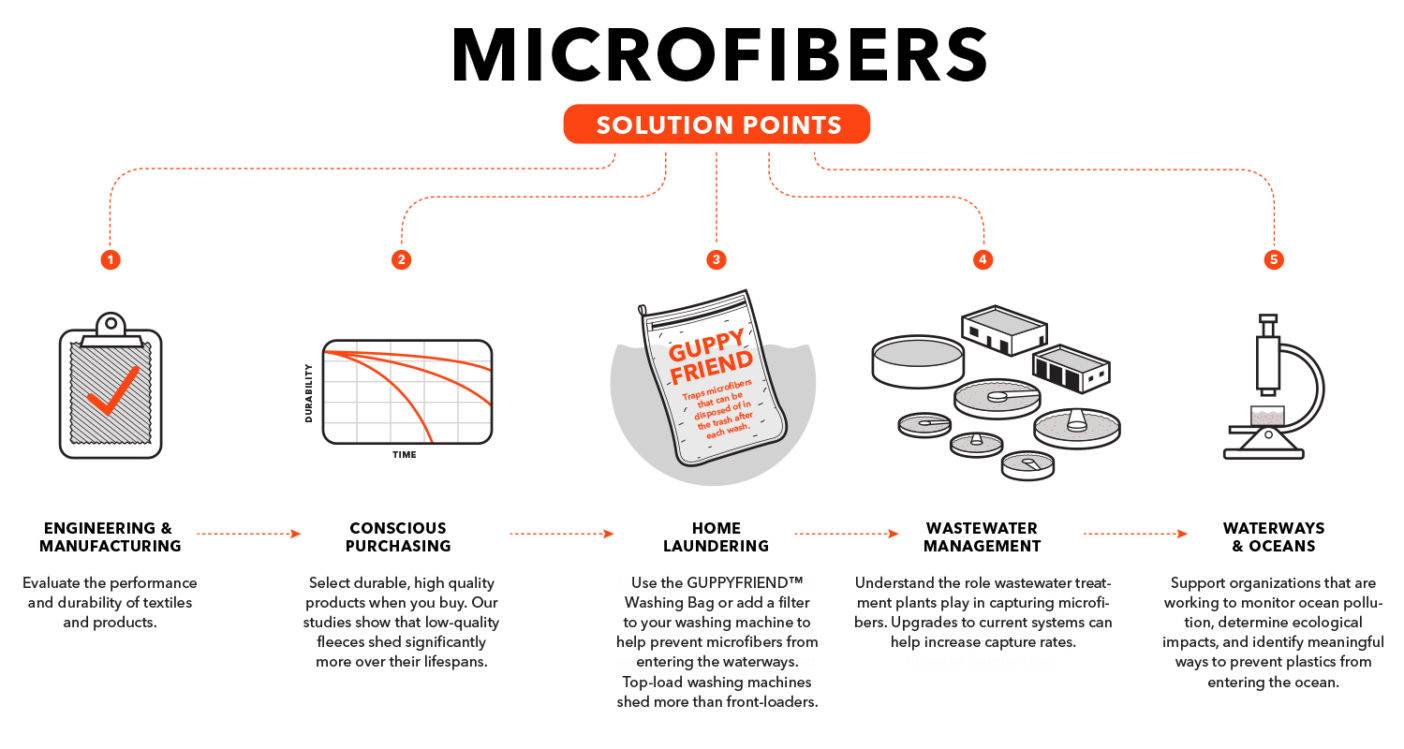Synthetic material is a versatile and cheap material. However, it now dominates the textile market. 75% of new fashion is now made from plastic and ends up in the ocean as microfiber pollution, eventually making its way onto our plate in fish.
According to Patagonia’s latest research The Cleanest Line, microfiber pollution often originates from synthetic textiles (nylon, acrylic, polyester), with low-quality synthetic products shedding the most.
The connection between micro-plastic in the ocean aka microfiber pollution and clothing was actually found in 2011.

Sydney based ecotoxicologist Dr Mark Browne and his team published a study in 2011 on the findings, ‘Accumulation of Microplastic on Shorelines Worldwide: Sources and Sinks’. The study found that the dominant source of plastic in the ocean was from microfibers, from textiles. Mark went a step further showing that by washing various textiles; over 2,000 fibers were released per wash into the environment.

Image: Patagonia
The solution?
The best consumer available solutions to date have been the Cora Ball and the Guppy Friend, bags and filters which prevent microfibers from being washed away with the laundry water. But their efficacy has been questioned until now.
A study by the University of Toronto and the Ocean Conservancy found the microfiber filter Lint LUV-R captured an average of 87% of microfibers, keeping them out of rivers and lakes, while Cora Ball captured 26%.
“These results suggest that these two technologies added to washing machines could be an effective way to reduce microfiber emissions to the environment. While further investigations are needed to understand the relative contributions of microfibers from other textile products and their pathways to the environment, we know that textiles laundered in washing machines are one source of microfibers and that effective mitigation tools currently exist.”
There are many areas that need further research to help designers reduce microfiber shedding mostly at the fabrication design level, but for now, it appears we’re on the right track.


